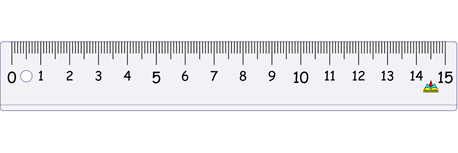
PUMPA - SMART LEARNING
எங்கள் ஆசிரியர்களுடன் 1-ஆன்-1 ஆலோசனை நேரத்தைப் பெறுங்கள். டாப்பர் ஆவதற்கு நாங்கள் பயிற்சி அளிப்போம்
Book Free DemoMeasurement using a ruler

The distance between the point 0 and 1 denotes a centimetre (cm). There are totally 9 small lines between the point 0 and 1. The distance between the two small lines within a centimetre (cm) denotes a millimetre (mm).
Measure the length of a pin using a scale

- The nail is placed such that the head of the nail coincides with '0' of the scale.
- First, the number of centimetres is counted.
- Then the number of finer divisions (i.e., mm) is counted.
It is clear from the given image that the length of the iron nail is 2\ cm and 5\ mm.
Corrective measures for measurement
In daily life, the measurement may not be exact and accurate. There may be some common errors while measuring, which may not have much impact on a daily basis. But in scientific calculations, it has a larger impact. For example, one cannot open a lock if the size of its key is changed even by 1\ mm.
Eye position
The position of the eye plays an important role in measurements. Position the eyes vertically above the point in front of the object where the measurement has to be taken. If you view from either side of the vertical position, the readings will be viewed differently and can lead to parallax error.

The difference in the object's apparent position when viewed along two different lines of sight is known as parallax error.
Reference:
https://cdn.pixabay.com/photo/2015/11/05/05/46/ruler-1023726_1280.png